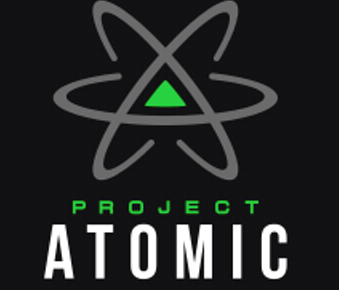Red Hat Seeds Container Market With Atomic Host

Red Hat, which less then a year ago sought to back up its mantra "The app is king" by unveiling an application container initiative called "Project Atomic," has announced general availability of an operating system tweaked to run workloads with Linux containers.
Red Hat Linux 7 Atomic Host, based on tools and frameworks developed under Project Atomic, is billed as providing the components needed to package and run applications written as containers in Red Hat Linux 6 and 7. The "hardened" container platform is intended to securely ship container-based workloads across open hybrid clouds, Red Hat said Thursday (March 5).
Separately, the open source developer released a tweak to its flagship Red Hat Enterprise Linux 7 platform unveiled last June.
The convergence of physical and virtual infrastructure along with public and private clouds has created what Red Hat executives call a single environment for running applications in the datacenter. "It’s all about running that application with consistency across the datacenter. And that’s where the operating system comes in," Paul Cormier, Red Hat's president for products and technologies, declared during a company pep rally last year when Project Atomic was announced.
For Red Hat and others, including the growing Docker container ecosystem, the next challenge is providing portability for applications across physical and virtual infrastructure as well as public and private clouds.
Hence, Red Hat claimed Atomic Host combines application "packaging" with an infrastructure designed to securely move RHEL-based applications across bare metal systems, virtual machines along with public and private clouds. The intent, Red Hat said, is "to make Linux containers a stable and reliable component of enterprise IT across the open hybrid cloud."
Amid the hype over application container technology, concerns have been raised about the security features of container technology and the ability to maintain security over the life cycle of an application container. Those concerns may explain why relatively few container technologies have so far entered production.
In response, Red Hat said Atomic Host would offer automated security updates along with access to security tools aimed at container reliability and security. Other security features include a Linux kernel security module along with kernel namespaces designed to isolate each container in a multiple container environment.
Backers of the Red Hat Atomic Host initiative like Japan's NTT Open Source Software Center also said it would unleash the promise of platform-as-a-service models.
Other features of Atomic Host include the ability to deploy and run container images in Docker format as applications containers. Red Hat also touted the Atomic Host's ability to deploy containers on physical hardware and certified hypervisors, including its own, Microsoft Hyper-V and VMware vSphere.
Along with hybrid clouds, applications also could be ported to public cloud services like Amazon Web Services and Google Cloud Platform, Red Hat said.
Indeed, open source veterans called Project Atomic and Atomic Host a good incremental step for handling applications in big enterprise clouds, but also emphasized the need to account for "persistent" data in the emerging era of the Internet of Everything. "Moving compute is easy, moving data is the hard part," noted Cole Crawford, a co-founder of OpenStack who is preparing to launch a new datacenter venture.
Red Hat's emphasis for now is on scale. For example, another Atomic Host feature is "container orchestration at scale" using Google Kubernetes. That, Red Hat said, would foster "large-scale business applications from discrete services" deployed in containers across Atomic Host clusters.
The container host also includes support for "super-privileged" containers used to install third-party software.
Separately, Red Hat released RHEL 7.1, offering upgraded development and deployment tools along with improved interoperability and security features.











